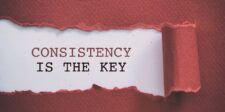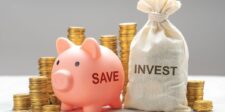Sustainability has shifted from a nice-to-have to a must-have in business strategy. Today’s companies face growing pressure from consumers, regulators, and investors to prove they operate responsibly, while still delivering growth and resilience. Those that treat sustainability as a core part of their operations set themselves up for long-term success.
In this guide, you’ll learn what business sustainability truly means, discover common challenges companies face, and explore practical strategies to embed sustainability that drives real impact and growth.
What is Sustainability in Business
Sustainability in business is the practice of building and running a company in a way that balances profit, planet, and people. It involves reducing environmental impact, using resources responsibly, supporting ethical labor practices, and making decisions that don’t compromise future business viability.
Unlike one-off green efforts, sustainability is a long-term operational mindset baked into supply chains, product design, internal policies, and brand governance. It’s not about perfection, it’s about consistency, accountability, and measurable progress.
Today’s market demands more than products and services; it demands responsibility. Climate risk, social inequity, and consumer scrutiny are reshaping how businesses are judged, funded, and regulated.
A 2024 survey by PwC found that 80% of consumers are willing to pay more for sustainably produced or sourced goods, even during inflationary periods. This shows that sustainability is now directly tied to business continuity.
Companies that integrate it strategically see stronger investor confidence, customer loyalty, and operational resilience. Those that don’t? They’re increasingly viewed as outdated, out of touch, or risky to support.
Dimensions of Sustainability
Understanding business sustainability starts with recognizing its three core dimensions. Each plays a distinct role in shaping a company that’s built to last, not just operate:
Environmental Sustainability – This focuses on minimizing harm to natural ecosystems. It includes responsible resource use, waste reduction, emissions control, and product life cycle management. Businesses that prioritize this area not only reduce their footprint but also lower long-term operational risks and costs.
Social Sustainability – Social sustainability is about how a business impacts people, employees, communities, suppliers, and customers. Fair wages, safe working conditions, diversity, and community engagement fall under this category.
Companies strong in this space build trust, reduce turnover, and foster brand loyalty.
Economic Sustainability – This refers to running a financially sound business without sacrificing long-term viability for short-term gains. It means reinvesting wisely, avoiding exploitative practices, and making decisions that balance profit with future stability.
Sustainable economics is what turns good intentions into lasting business strategy.
Building a Business Strategy That Actually Supports Sustainability
Creating a sustainable business isn’t about bolting on a few eco-friendly policies, it’s about integrating sustainability into how your company thinks, operates, and grows.
The goal is to align impact with long-term value so that sustainability becomes a competitive advantage, not a side project.
1. Rethink Supply Chain Decisions
Sustainability starts upstream. Every product, part, or raw material you bring in has an environmental and ethical footprint. Businesses that take the time to source responsibly, not just cheaply, are better equipped to meet regulatory expectations, consumer demands, and their own longevity goals.
It’s not about perfection from day one, but transparency and continuous improvement are non-negotiables.
Shifting to sustainable procurement doesn’t just reduce carbon, it builds brand credibility. Companies that screen suppliers for labor practices, emissions, and waste management send a message: we care, and we’re paying attention.
That alone can influence investor confidence, customer loyalty, and internal morale.
Pro Tip: Conduct a supplier impact audit annually and prioritize partners who can provide sustainability certifications or lifecycle data.
2. Design Products With Lifecycle Thinking
Design decisions are sustainability decisions. Everything from the materials you use to how a product is packaged, shipped, used, and disposed of contributes to its long-term impact. Companies that embed circular design thinking, like recyclability, durability, and modularity, extend product value while reducing waste.
Product development teams often overlook the end-of-life phase. But smart businesses plan for disassembly, reuse, and secondary markets upfront. This doesn’t just lower environmental impact, it creates new revenue streams and differentiation in saturated markets.
Pro Tip: Include end-of-life scenarios in product planning sessions to assess waste impact and recovery opportunities.
3. Use Data to Guide Sustainable Decisions
You can’t improve what you can’t track. Many companies launch sustainability efforts with good intentions but no benchmarks. That leads to vague goals and zero accountability. Real strategy is grounded in measurable data, emissions, energy use, water consumption, material waste, and supplier metrics.
Modern sustainability tools can integrate with operations, allowing real-time insight into impact. This data supports smarter decisions, better reporting, and clear progress you can share with investors and customers alike. Sustainability is a KPI now. Treat it like one.
Pro Tip: Adopt lifecycle assessment (LCA) software or plug-in tools to monitor environmental impact across operations.
Measurable progress starts with full visibility. Tools like Sintra help track key performance indicators across teams and workflows—giving leaders a real-time view of what’s working, what’s lagging, and where to adjust.
4. Engage Employees as Stakeholders
Sustainability lives and dies with your team. You can set all the targets in the world, but if your employees aren’t bought in, none of it sticks. Businesses that include employees in sustainability planning, training, and goal-setting drive stronger engagement and faster execution.
When employees see their input reflected in strategy, specially around waste reduction, energy use, and workplace ethics, they become champions, not just participants. That energy creates cultural momentum and holds leadership accountable from the inside out.
Pro Tip: Launch an internal “green council” or employee-led sustainability task force to surface grassroots solutions.
5. Make Energy Efficiency a Default, Not a Bonus
Energy efficiency is one of the most accessible ways to reduce both costs and environmental impact. Simple upgrades, like LED lighting, sensor-controlled systems, and updated HVAC units, deliver measurable results without overhauling your operations.
The businesses that prioritize efficiency early set a standard that compounds savings and sustainability over time.
Beyond tech, human behavior plays a major role in waste reduction. Encouraging power-down routines and optimizing schedules for equipment use makes a real difference. The key is to bake efficiency into everyday processes, not treat it like a special project.
Pro Tip: Run an annual energy audit through a certified local provider and use the findings to prioritize upgrades and policy shifts.
6. Be Transparent With Goals and Progress
Sustainability without transparency is just PR. Customers and stakeholders want to see clear goals, actual timelines, and real data, especially if you expect them to buy in. Being upfront about both wins and struggles builds credibility that no marketing campaign can fake.
You don’t need perfect results to share progress. In fact, showing the messy middle makes your journey more relatable. Open reporting encourages accountability internally and invites constructive input from your community.
Pro Tip: Create a public sustainability dashboard or annual progress summary that includes real data and defined next steps.
Sustainability communication isn’t just for shareholders. Clear, consistent storytelling—amplified through natural-sounding voice tech like ElevenLabs—can help teams, partners, and customers stay informed and inspired. When your message is human, your mission gains momentum.
7. Embed Sustainability Into Company Culture
Culture is what drives behavior when no one’s watching. If sustainability is only discussed at board meetings or buried in slide decks, it never sticks. To make it real, it needs to be part of how people think, decide, and measure success every day.
That starts with leadership alignment, but it lives in team rituals. From eco-friendly challenges to green budget lines, small habits create long-term change. When everyone owns it, sustainability becomes the norm, not the exception.
Pro Tip: Add sustainability metrics to team scorecards and integrate into quarterly business reviews.
8. Partner With Purpose-Driven Brands
Who you work with reflects what you stand for. Collaborating with purpose-driven brands multiplies your impact, strengthens your reputation, and creates shared value for both sides. These partnerships show customers you’re not just talking values, you’re choosing them.
Look beyond suppliers and into co-branded campaigns or joint initiatives. Shared sustainability goals can open new markets and attract aligned audiences. Plus, you learn faster when you’re solving problems with companies that get it.
Pro Tip: Evaluate key partnerships using an ESG lens and prioritize collaboration with brands that share your values and commitments.
Partnering with impact-driven brands works best when relationships are aligned and data-backed. HubSpot CRM helps track campaign performance, lifecycle touchpoints, and custom relationship data—so your sustainability partnerships can drive real, measurable growth.
Need help crafting sustainability reports or internal comms? Let HelperX Bot, our AI assistant, help you generate ideas, write first drafts, or brainstorm ways to communicate your sustainability goals clearly.
Challenges That Hold Back Real Business Sustainability
Even with the best intentions, sustainability isn’t always easy to implement. Businesses face structural, cultural, and financial roadblocks that stall progress or water down efforts. Recognizing these challenges is the first step to addressing them in a practical, lasting way.
Short-Term Thinking Dominates Long-Term Strategy
Many businesses are driven by quarterly results and short-term wins, leaving little room for long-view investments. Sustainability often requires upfront costs or slower returns, which can be hard to justify in boardrooms obsessed with immediate growth. This short-sighted mindset makes it easy to deprioritize long-term impact. As a result, sustainability stays stuck as a “someday” item.
Solution: Reframe sustainability metrics as risk mitigation and future-proofing, tie them directly to long-term value, stability, and resilience.
Lack of Internal Expertise and Ownership
Sustainability gets sidelined when no one truly owns it. Without internal champions or trained specialists, strategies end up fragmented or superficial. Teams may not know how to measure impact, set realistic goals, or align with evolving standards. This leaves sustainability efforts disconnected from the rest of the business.
Solution: Assign cross-functional sustainability leads or create a dedicated task force trained to lead initiatives and measure results consistently.
Cost Perception Blocks Action
A major misconception is that sustainability is expensive by default. Businesses worry that greener options will erode margins or slow down productivity. In truth, many sustainable choices, like reducing waste or improving energy efficiency, lower costs over time. But without that long-term view, companies hesitate to invest.
Solution: Start with high-impact, low-cost improvements that show fast ROI, then reinvest savings into broader initiatives.
Greenwashing Pressure Undermines Trust
To appear modern, some brands make sustainability claims they can’t back up. This creates skepticism among customers and regulators, damaging credibility. Even companies doing the work can get lumped into the noise if their messaging lacks transparency. One false move can overshadow genuine efforts.
Solution: Back every claim with data, certifications, or documented policies, and be honest about what’s still in progress.
Supply Chain Complexity Makes Accountability Hard
Most businesses don’t have full visibility into their supply chains, especially if they work with multiple vendors across regions. That complexity makes it difficult to track environmental impact, labor practices, or raw material sourcing.
When suppliers are opaque, sustainability becomes guesswork. This lack of traceability undermines even the best intentions.
Solution: Prioritize working with suppliers who offer transparent reporting and build long-term partnerships that include shared sustainability goals.
Who’s Doing It Right
Some companies aren’t just talking about sustainability, they’re building it into their DNA. These brands offer clear, practical models for how sustainability can drive innovation, trust, and long-term growth without sacrificing performance.
Patagonia
Patagonia has become the benchmark for sustainability-led business. The company integrates environmental responsibility into product design, supply chain decisions, and even its marketing.
It donates one percent of sales to environmental causes, offers free repairs on worn gear, and actively campaigns against overconsumption. Patagonia’s entire brand identity is proof that you can build customer loyalty by standing for something bigger.
Unilever
Unilever has embedded sustainability into its global operations through its Sustainable Living Plan. The company has committed to reducing its environmental footprint while increasing its positive social impact, with goals tied to sourcing, packaging, and emissions.
Over 60 percent of its raw materials are now sustainably sourced, and many of its brands, like Dove and Ben & Jerry’s, lead with purpose-driven messaging. Unilever’s results show that scale doesn’t have to come at the planet’s expense.
IKEA
IKEA has made bold moves toward becoming climate positive by 2030. Its strategy includes investing in renewable energy, using sustainable materials like FSC-certified wood, and creating take-back and recycling programs for customers.
The company is also redesigning products for circularity, making disassembly and reuse easier. IKEA proves that even massive global retailers can shift operations toward sustainability without losing affordability or reach.
Allbirds
Allbirds built its brand around full transparency and low-impact design. From using natural materials like merino wool and sugarcane-based foam to publishing the carbon footprint of every product, Allbirds takes lifecycle accountability seriously.
The company has also committed to cutting its per-product carbon footprint in half by 2025. Allbirds shows how startups can lead sustainability efforts by embedding them in the business model from day one.
Final Word: Sustainability Isn’t a Trend, It’s a Business Advantage
Sustainability is no longer a side effort, it’s a core strategy for staying competitive, relevant, and resilient. The businesses that win long-term are those that align profit with purpose and take measurable action instead of making empty claims.
It’s not about being perfect; it’s about being accountable and proactive. Real impact starts with integrating sustainability into decisions, culture, and partnerships from the ground up. If your business is built to last, it should also be built to sustain.
Ready to communicate your sustainability goals with more clarity? HelperX Bot can help you write updates, draft reports, or generate campaign ideas that support your mission.
Frequently Asked Questions
What are the biggest benefits of business sustainability?
Business sustainability improves brand reputation, attracts loyal customers, and reduces operational costs through efficiency. It also helps companies manage risks linked to environmental and social issues, making them more adaptable to market and regulatory changes over time.
How can small businesses start implementing sustainability?
Small businesses can begin by auditing their energy use, reducing waste, and choosing sustainable suppliers. Starting with small, manageable changes builds momentum and demonstrates commitment without overwhelming limited resources or budgets.
Does business sustainability require special certifications?
Certifications like B Corp or ISO 14001 can validate sustainability efforts but are not mandatory. They provide frameworks and credibility but real impact comes from consistent, measurable actions integrated into everyday business practices.
Source:
- https://www.pwc.com/gx/en/news-room/press-releases/2024/pwc-2024-voice-of-consumer-survey.html?
Related:
- Retail Digital Marketing Strategies to Drive Sales
- Digital Marketing vs Growth Marketing: Which is Best?
- Content Marketing Strategy: A Brief and Practical Guide

We empower people to succeed through information and essential services. Do you need help with something? Contact Us.
Want a heads-up once a week whenever a new article drops?







